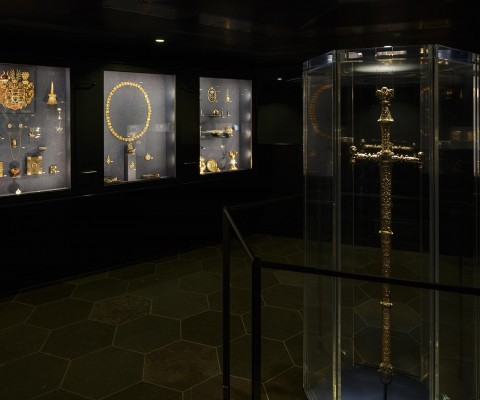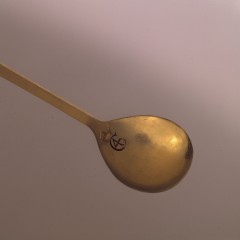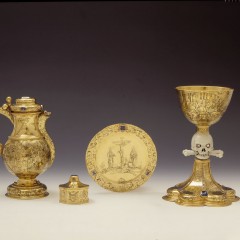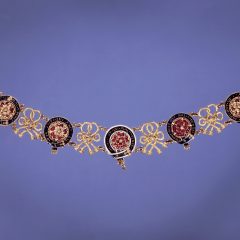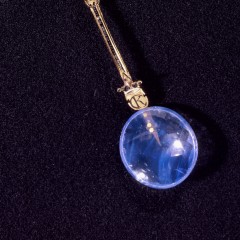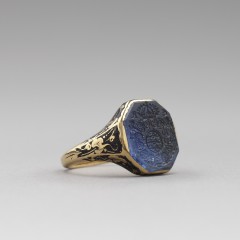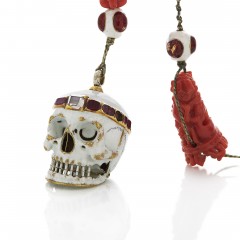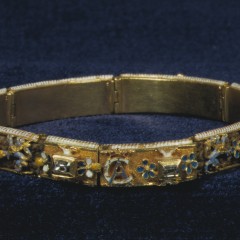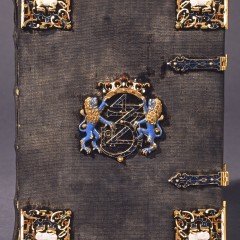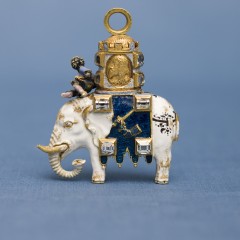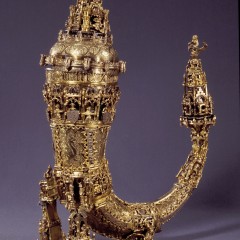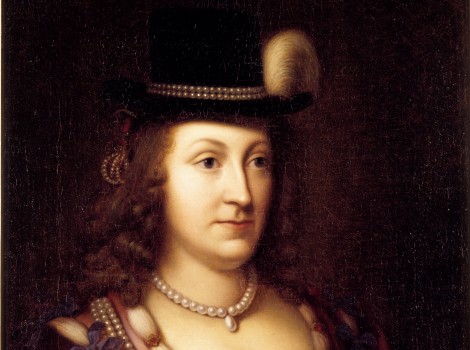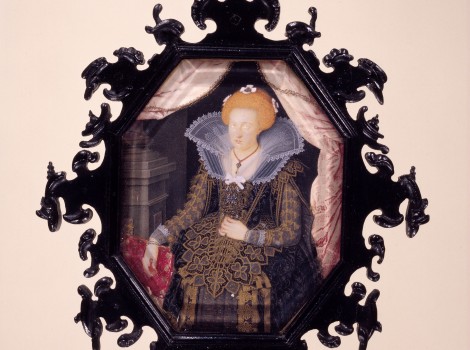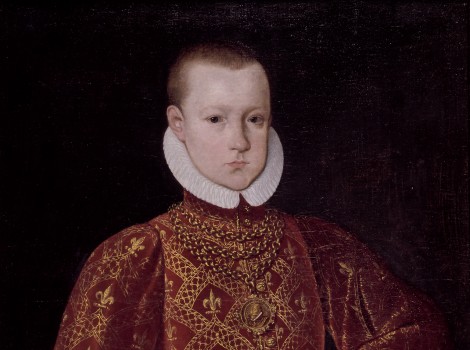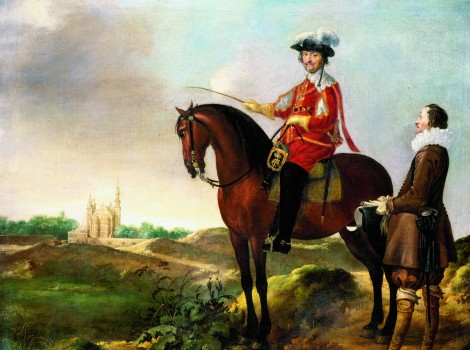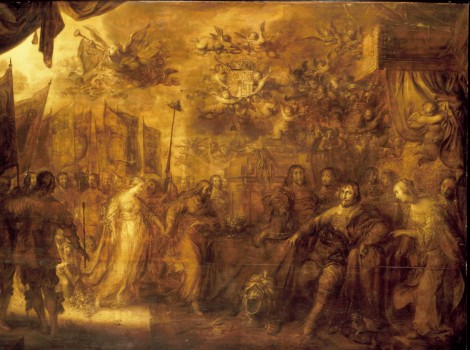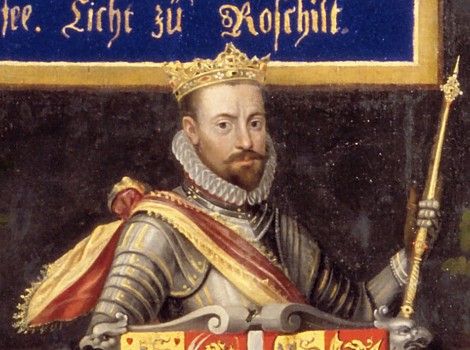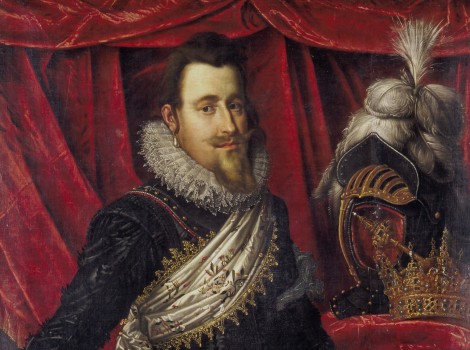G The Treasury
The Treasury in the castle basement was first opened to the public in 1975. The raw concrete room was designed by the architect Peter Koch. The room, which houses most of Rosenborg’s most valuable treasures, is divided into three sections.
Among the treasures in the first section is Christian III’s State Sword. The Sword was among the regalia used at coronations before the introduction of Absolutism; it was used for the last time at the coronation of Frederik III in 1648. Also displayed are the earliest specimens of the Order of the Elephant, Christian IV’s Order of the Garter and other exhibits, mostly dating from the time of Christian IV.
One of the outstanding items in section 1 is the Oldenburg Horn. It is said that it was given to Count Otto, the first member of the House of Oldenburg, while hunting in 989 by a mysterious young girl. She wanted him to drink from it but he poured out the drink and took the horn with him. However, the horn was not made until around 1400, though that does not make the story any worse.

 Dansk
Dansk
 English
English
 Deutsch
Deutsch



